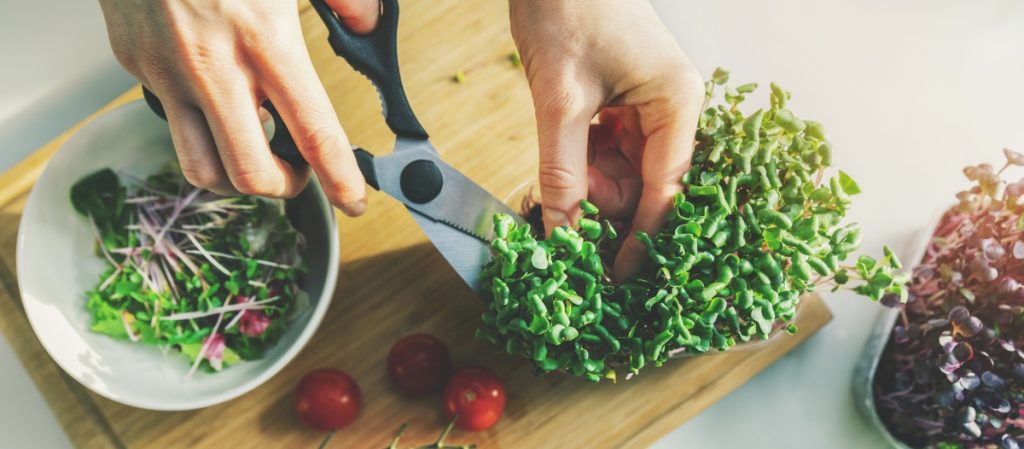Microgreens are a fresh and tasty crop that you can grow right on your kitchen countertop.
But do microgreens regrow after cutting? Unfortunately the answer is no, in most cases.
All of the energy in a microgreen seed goes into producing those first few sets of leaves. So once you cut the microgreen, there’s no energy left for it to grow back again.
There are a few exceptions to this rule, which we’ll discuss in this article. But in general, we don’t recommend trying to regrow microgreens after cutting.
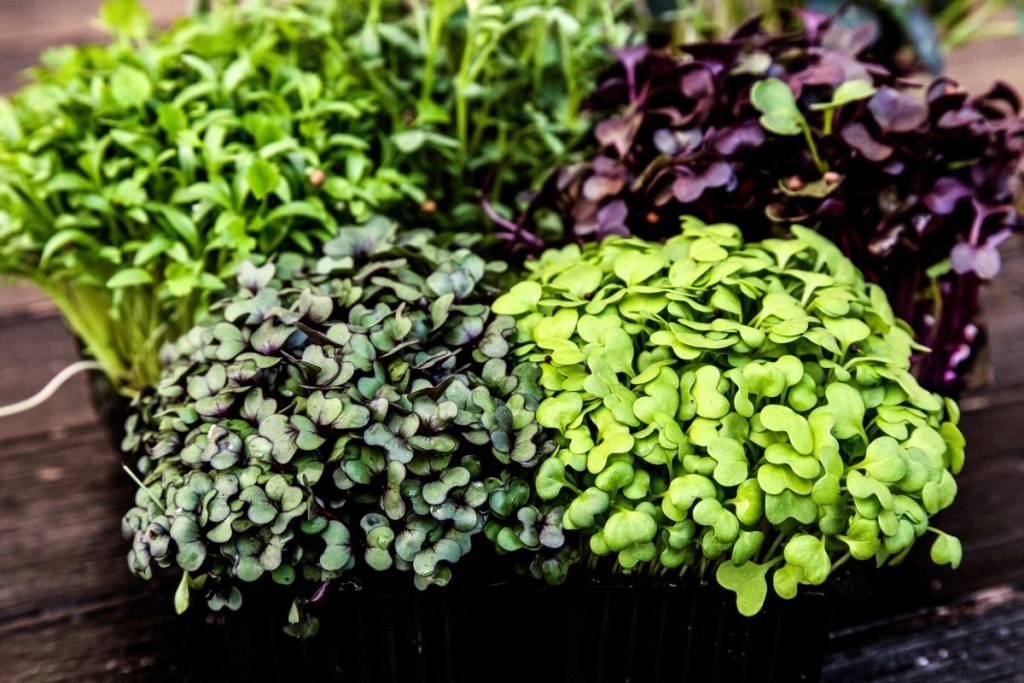
What Are Microgreens?
Microgreens are plants that are harvested for eating after only their first set of leaves has sprouted.
A wide variety of vegetables and plants can be grown as microgreens. Some of these include broccoli, arugula, radish, sunflower, peas and more.
Most microgreens range in size from 1 to 3 inches (2.5 to 7.5 cm) in length. That includes everything including the stems, leaves and sometimes even the roots.
Chefs use microgreens as a garnish or visual aid for their dishes. But these tiny plants also pack immense nutritional benefits, despite their small stature.
They also make a great addition to salads, sandwiches and soups, where they add extra flavors and textures.
The flavors of microgreens can range from sweet to spicy.
Microgreens are usually harvested by cutting the stems of the plants just above the soil.
Don’t have any soil at home? Why not try to Grow Microgreens on Paper Towels in 7 Simple Steps?
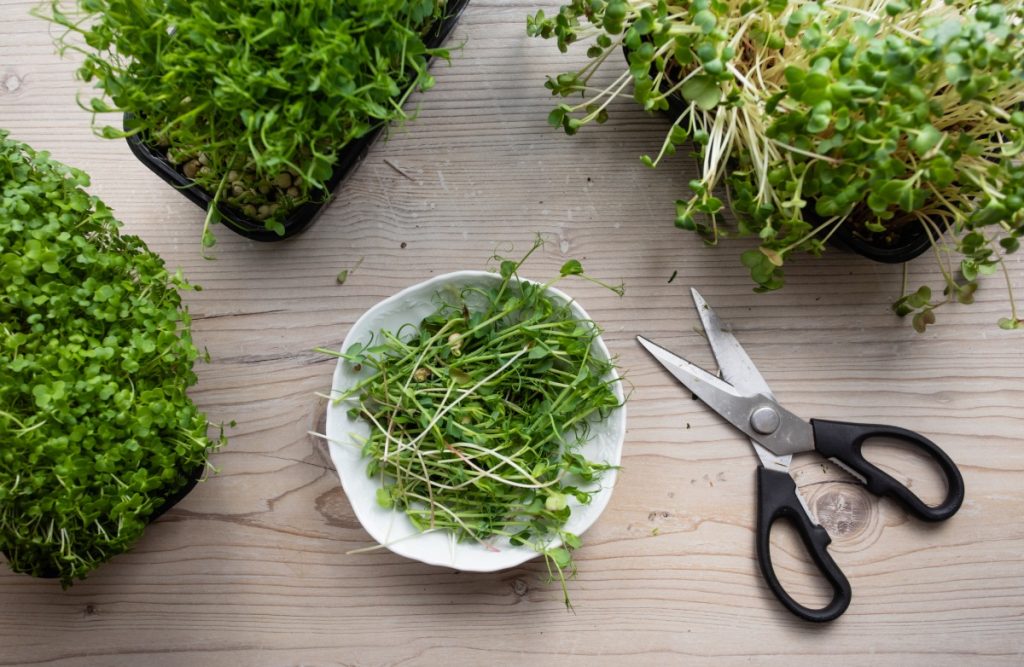
Do Microgreens Regrow After Cutting?
Unfortunately, no, most microgreens won’t grow back after cutting.
The vast majority of plants won’t grow back at all. A plant’s seed usually only contains enough energy to get the first set of leaves up.
So after the first round of microgreens, all of the energy stored in the seed is spent. There is none left to try and regrow from.
A few species like peas have a slight chance of growing back. Although any regrowth is quite sporadic and not something we would suggest you count on.
Trying to regrow microgreens after cutting also increases the risk of mold and other forms of contamination.
Are you worried that growing microgreens is a waste of good seed?
See our article Are Microgreens Sustainable? The Truth About Growing Microgreens to learn why that’s not the case.
Is Microgreen Regrowth Worth It?
In our opinion, it’s not worth trying to regrow microgreens at all.
At home, you may try experimenting with regrowing microgreens to get the maximum yield that you can.
You may get a few extra microgreens out of your tray. More than likely, these will be late sprouting seeds rather than plants regrowing for a second time.
In a commercial microgreens growing operation, trying to regrow rarely makes economic sense in terms of time and inputs.
Instead, the roots and soil are dumped out of the tray and the process starts again with fresh seeds and soil.
It’s much better to simply put that energy and space into growing a new batch of microgreens instead.
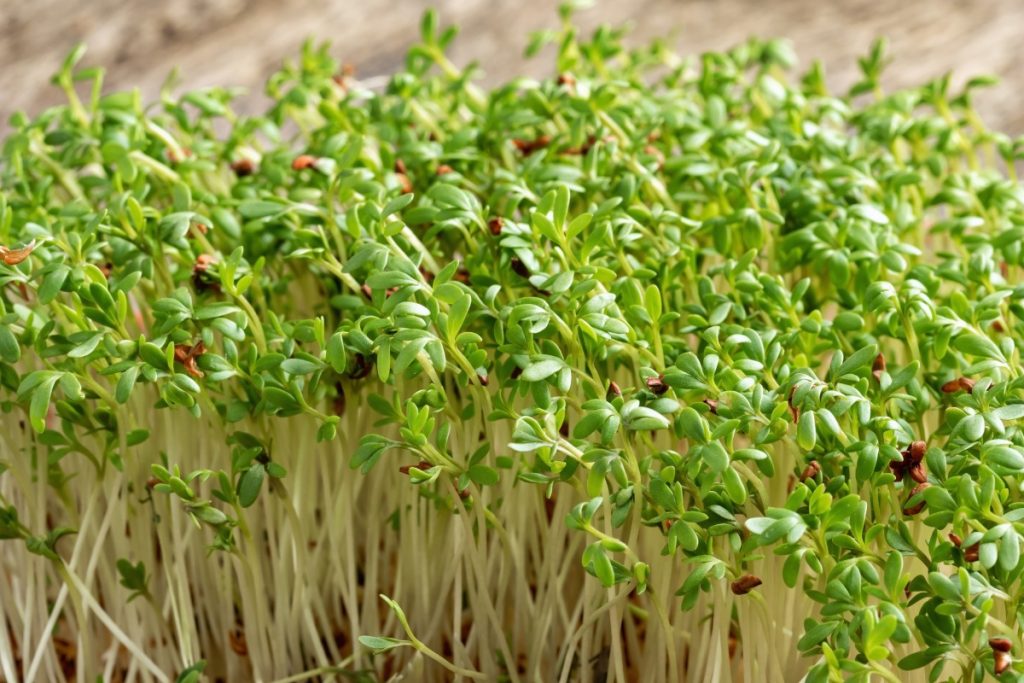
What Affects Microgreen Regrowth?
The main thing that prevents microgreens from consistently regrowing is that there isn’t enough energy left in the seed to re-grow.
Sure, there may be additional nutrients in the soil. But if a plant isn’t able to photosynthesize, then it can’t make use of these.
So if you did want to increase your chances of having microgreens regrow, you would need to leave at least one set of leaves on the plants.
However, most microgreens are harvested too early in a plant’s life for this to be possible. At that point you would be dealing with baby greens, not microgreens.
To maximize your chance of regrowth, it’s best to put your microgreens in large pots. This will allow for better root structure to develop and make the plants more likely to regrow.
What should you grow microgreens in? See our article Best Growing Medium For Microgreens to learn the answer.
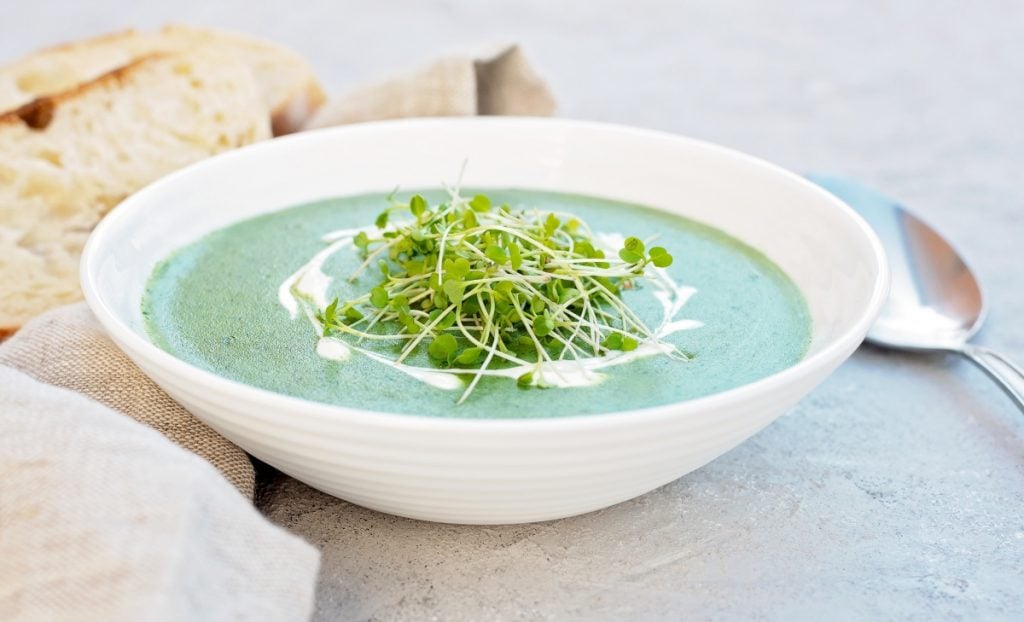
Health Benefits of Microgreens
Microgreens are packed full of nutrients.
The exact nutritional composition will depend on what type of microgreens you’re growing. But most varieties will tend to be high in copper, iron, magnesium, potassium and zinc.
Microgreens may help to reduce the risk of the following diseases:
1. Diabetes – Microgreens contain high amounts of antioxidants. They might help reduce the type of oxidative stress that can prevent sugar from properly entering cells.
Fenugreek microgreens in particular seem to increase cellular sugar intake by more than 25%.
2. Some types of cancers – Certain types of microgreens are high in polyphenols. These compounds may lower the risk of various types of cancer.
3. Heart disease – Microgreens may lower LDL (bad) cholesterol and triglyeride levels, which contribute to heart disease.
How Long Microgreens Take To Grow
Most microgreens are ready to harvest in as little as two weeks. Some like radishes or mustard can grow even faster.
Most herbs take longer to grow than vegetables when grown as microgreens. Expect more than two weeks, possibly up to a month for some herb microgreens to mature.
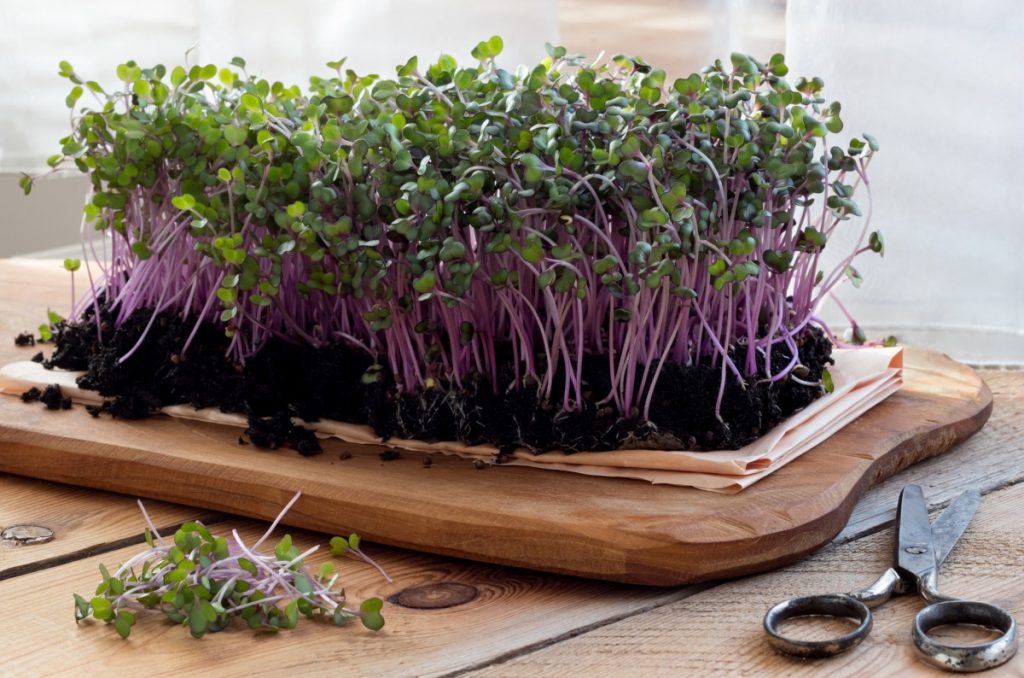
Which Types of Microgreens Should You Regrow?
Plants with larger seeds like peas or beans tend to have the best chance of regrowing after being cut.
Probably because there is still some energy left in the seed to make a second attempt at growing, even after the first cut.
You can try experimenting with your favorite microgreens to see what works best for you though.
If you’re ready to get serious about microgreens, then you need to read How To Grow Microgreens: The Ultimate Guide.
What Happens If You Don’t Harvest Microgreens?
If you leave microgreens for long enough, they’ll simply grow into full-grown plants. At least, as long as they’ve got enough space, nutrients and light to grow.
What happens if you let microgreens grow?
Microgreen seeds will grow into the full version of their respective plant if given long enough. It’s just that microgreens seeds are normally bred for fast seedling growth.
So microgreen seeds grown into full plants might not have the best fruit production or taste.
If microgreens don’t have enough space or nutrients to grow, they will simply die. In small trays, some plants will shade and crowd others out.
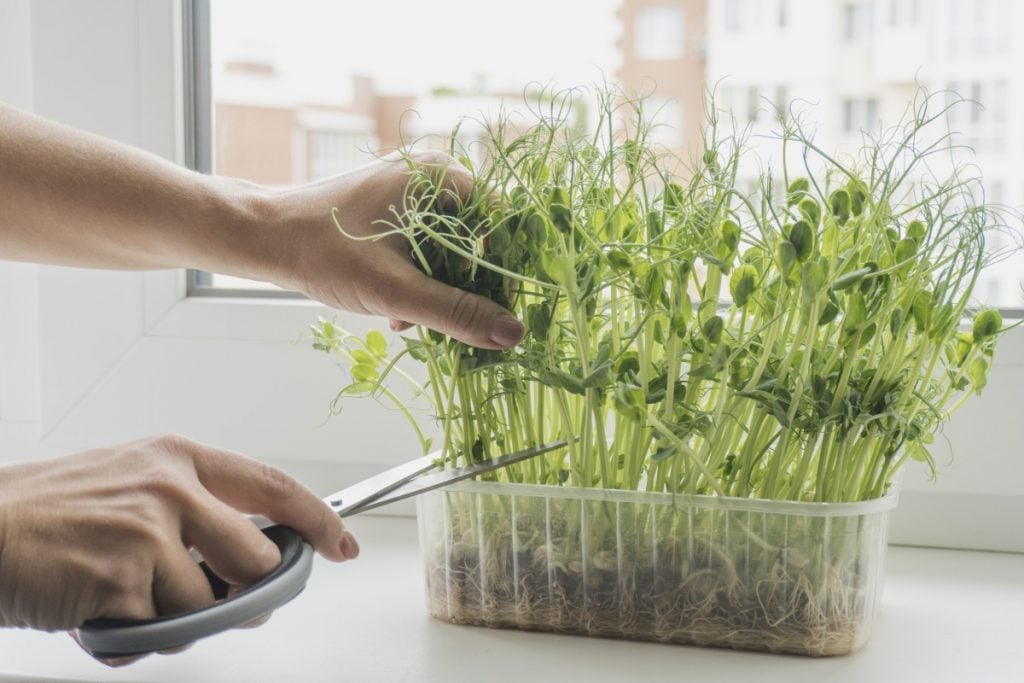
How To Harvest Microgreens
If you’re hoping to regrow your microgreens, it’s critical that you don’t pull them out of the soil with your fingers when harvesting.
That will disturb all of the roots, or possibly pull them out of the soil entirely.
Instead, you’ll want to take a sharp knife or pair of scissors and cut the greens as close to soil level as you can.
How Long Do Cut Microgreens Last?
As a general rule, microgreens that you purchase from the store will usually last a bit over a week in your fridge.
It normally takes several days just for microgreens to get shipped to the supermarket.
If you grow your own microgreens at home and cut them yourself, then they’ll likely last about two weeks when refrigerated.
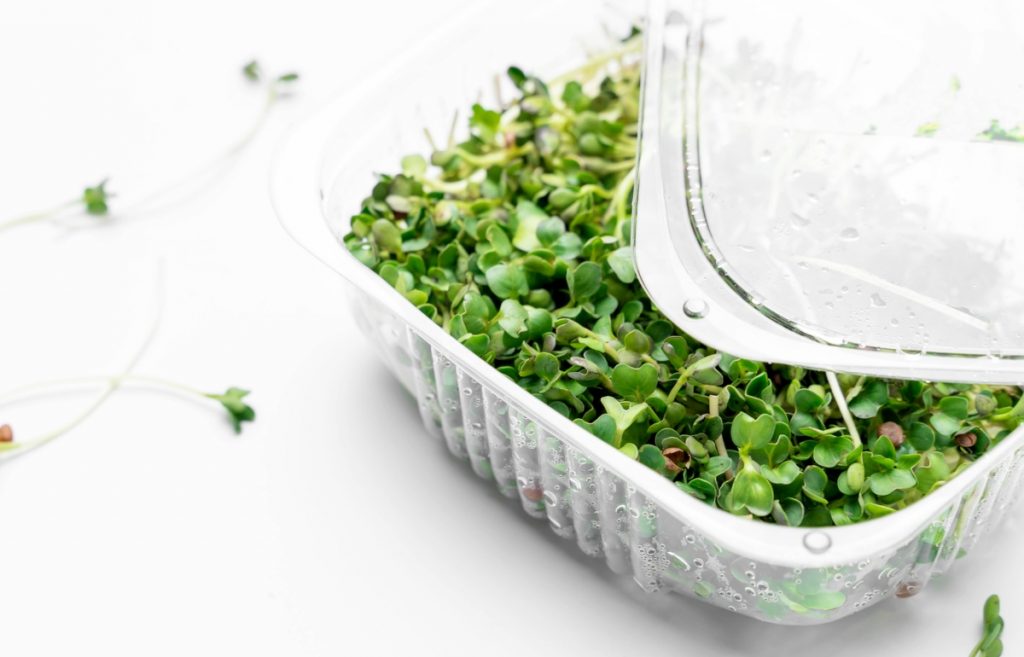
How To Serve Microgreens
Serving microgreens in your cooking ultimately comes down to how creative you want to get with them.
Microgreens make a great addition to:
- Sandwiches
- Soups
- Salads
- Smoothies
- Stir fries
- Tacos
- Pizza
- Basically anywhere else that you’d use sprouts or salad greens

Final Thoughts
Microgreens are an inexpensive and easy crop to grow. They are ready to harvest in about two weeks.
You can add microgreens to many of your favorite recipes including soups, salads and sandwiches.
It can be tempting to try and regrow microgreens after cutting. But most microgreens won’t regrow after cutting.
For those that will regrow, it’s usually more trouble than it’s worth. It’s usually best to simply dump out your spent soil and roots and start over with fresh seeds.
If you’d like to learn more about microgreens, be sure to check out our Microgreens Hub. We’ve got about a dozen articles devoted to just microgreens for you to read there.
You can learn everything from growing microgreens on paper towels to turning microgreens into a business. Happy growing!
